A NEW STAR IS BORN – JOINT VENTURE
A man who openly admits to a fascination with rear ends runs a very real risk of being misunderstood. So understand me when I confess to my obsession with the hind quarters: I’m talking about work not pleasure – and here, as in most other respects, it is wisest to keep the two separate.
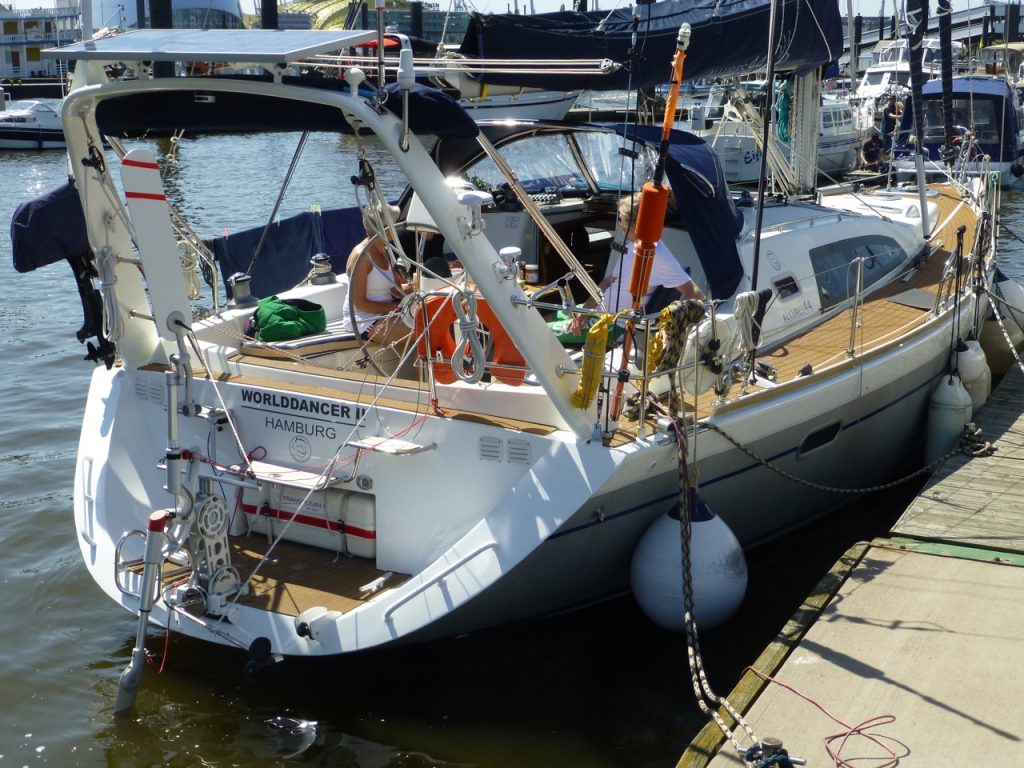
THE TRANSOM IS MY DEPARTMENT
Regular visitors to the Windpilot blog will perhaps have noticed my predilection for word play, which I am happy to indulge here as extra seasoning in my stories, a little something to enliven the tale (tail?) in the writing as well as the reading.
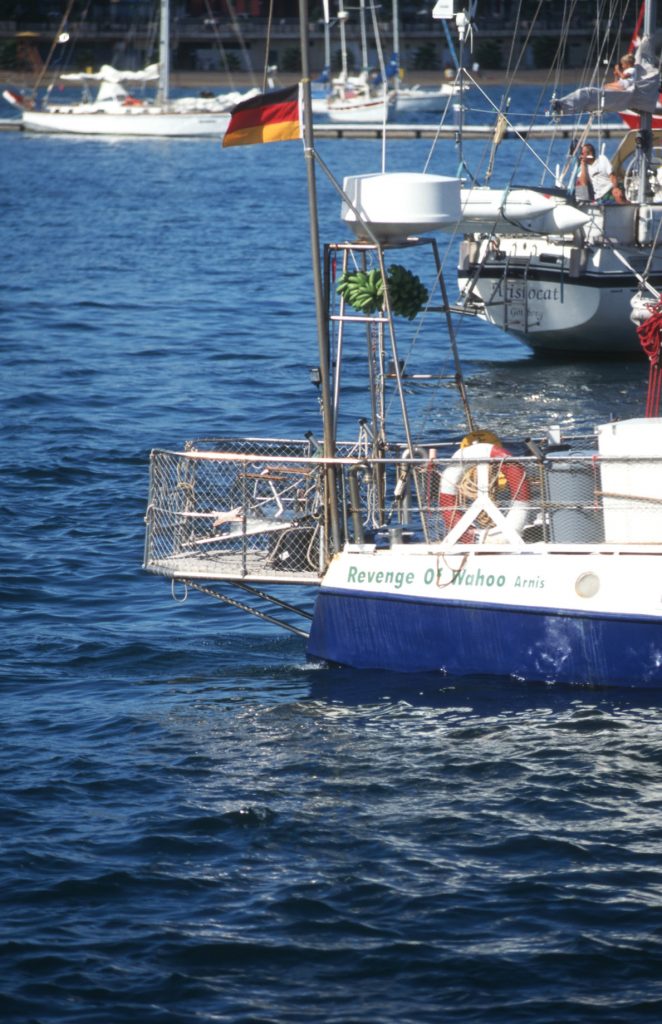
Taking the bull by the horns is always regarded as somehow the right thing to do, a sign of good judgement and strength of character. Paradoxically, taking the bull by the horns in the matter of self-steering under sail means approaching from entirely the opposite direction: the most important equipment on the boat is always to be found right at the back. Pity the sailors who underestimate or neglect altogether this crucial feature: for them awaits a future plying the oceans in a laughing stock of a vessel whose transom loudly betrays their impropriety at every meeting.
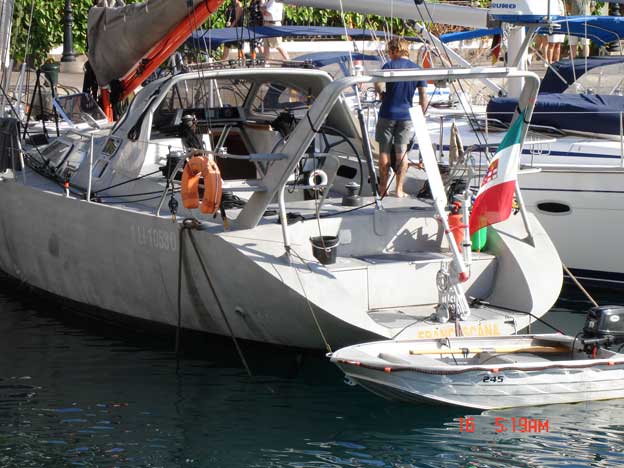
My promise is to help wiser heads avoid this peril with a solution that does the job and looks good doing it, a solution that brings a certain panache, a graceful accent to the compelling fruits of the naval architect’s art (or lipstick on a pig, as the case may be).
Forgive me if I claim the best spot at the stern – the very centre point of the transom – for a product of my own imagination but my views are clear: when equipping a boat for long-distance travel, the only sensible place to start is with self-steering. Don’t get me wrong, I have nothing against the little black steering box with its alluring copper cables, it is as much a part of the bluewater yacht as the sails that hang from its mast, but please, I implore you, don’t bet the farm solely on this one nifty box of tricks just because you are so used to pressing buttons in every other part of life.
BEWARE: planning errors in this vein can hardly be corrected at sea and reaching even the closest port (never mind your intended destination) following an autopilot failure can easily involve manual steering to the point of exhaustion (and then, in the absence of any other option, some more manual steering). Not only that, but what should be enjoyable time at sea becomes a test of physical endurance and mental resilience, especially for the skipper (or whoever it was who made the decision in the first place). And reaching land, while it provides an opportunity to correct matters in the self-steering department, also brings with it the risk of crew and/or spouse, who would likely have dreamed a very different dream of life at sea, running for the hills.
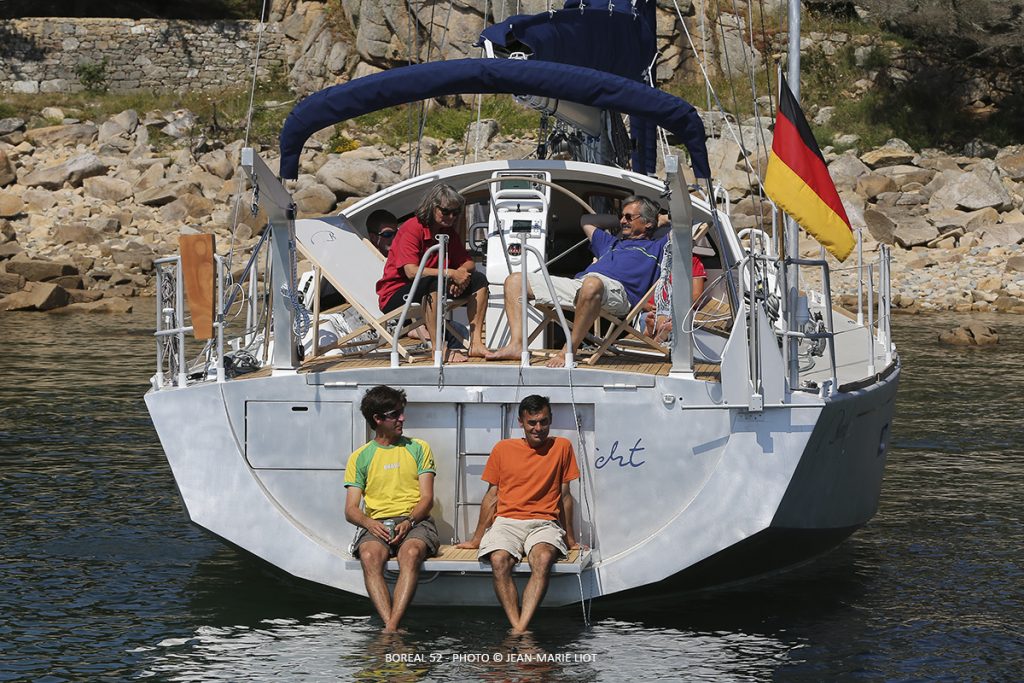
le Boreal 52
Le 24 juin 2014
Photo © Jean-Marie LIOT
A good ship for long-distance voyaging should be examined, scrutinised and selected from behind and the required items of equipment should then be lined up elegantly at the stern like birds on a wire without compromising buoyancy or stability – or indeed credibility.
The shopping list reads something like this: tender, davits, antenna arch, bathing platform, life raft, wind generator, hydro generator … oh yes, and that wiggly thing that uses the wind to pilot the boat, one of those things, you know… These are the issues I talk myself hoarse discussing as I seek to help customers in search of advice determine which compromises to abandon and which to accept with good grace. A cliché it may be, but a couple of nights at sea really is long enough to bring planning mistakes to light and I am consequently more than happy to seize on any uncertainties to help save people from an unpleasant surprise as soon as they venture offshore. Time spent advising prospective bluewater sailors is time well spent (and all the more so if it results in a happy customer).
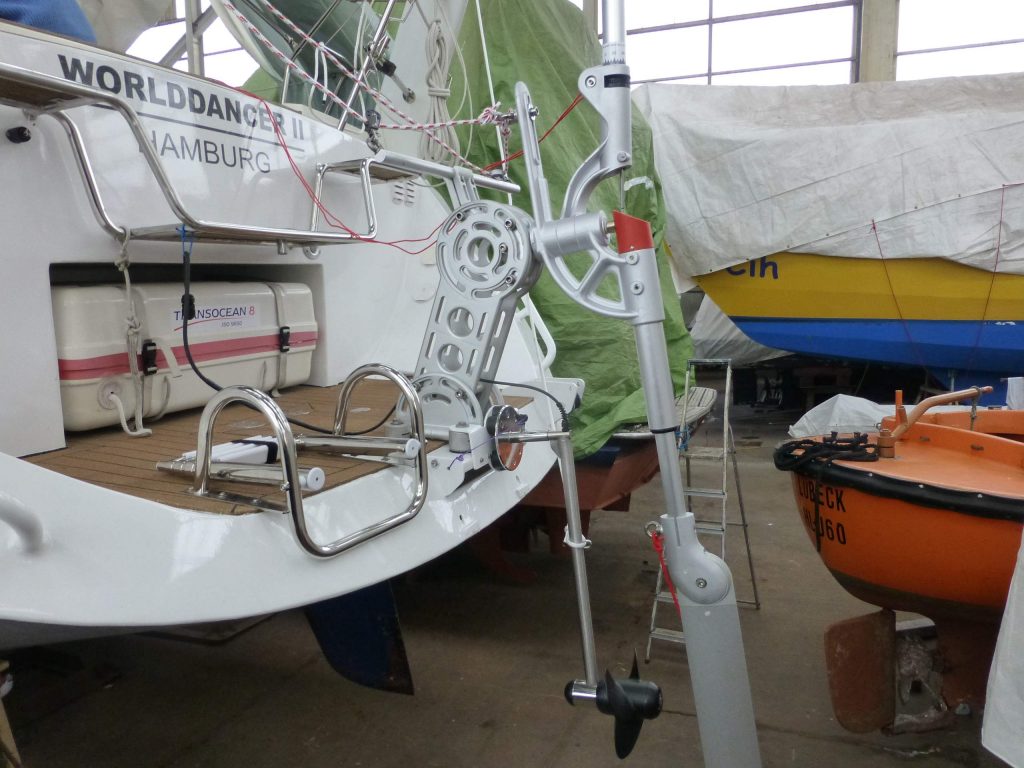
THE NUMBER TWO ISSUE
Good self-steering makes all the difference, but however much I might love the subject there are other things too that I would like to address. Chief among these today is the number two topic that concerns everyone aboard, namely juice: how do I keep my batteries well fed and my volt metre out of the red?
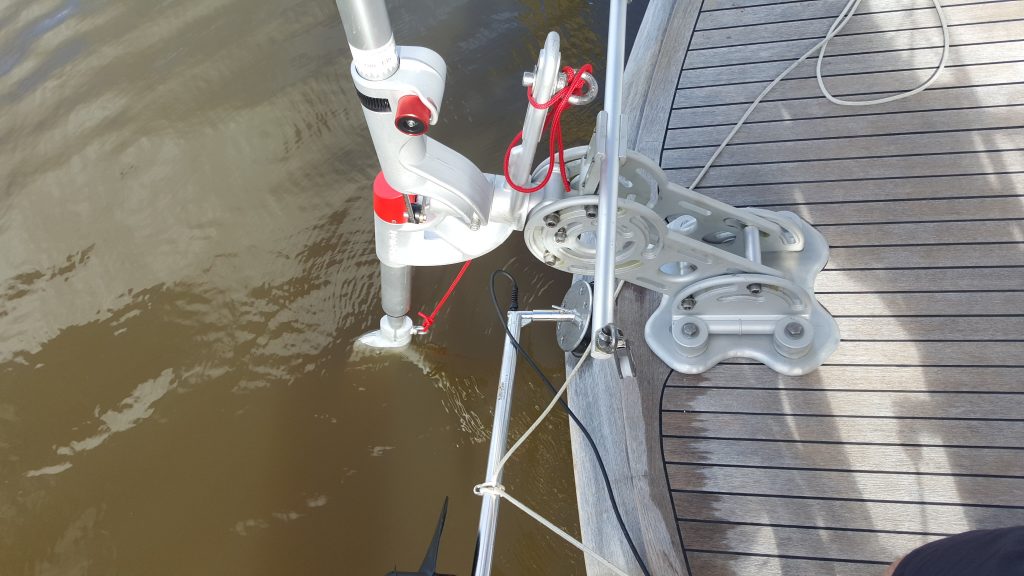
ENERGY MANAGEMENT
This is a subject that could fill book after book. Actually it already has filled book after book: the alternatives are well known, preferences have been formulated, claims articulated and prices set in their context. None of this dissuades me from sticking my oar in, however, because the prevailing situation and pricing structures in the market play into my hands and cry out to me to highlight a different way.
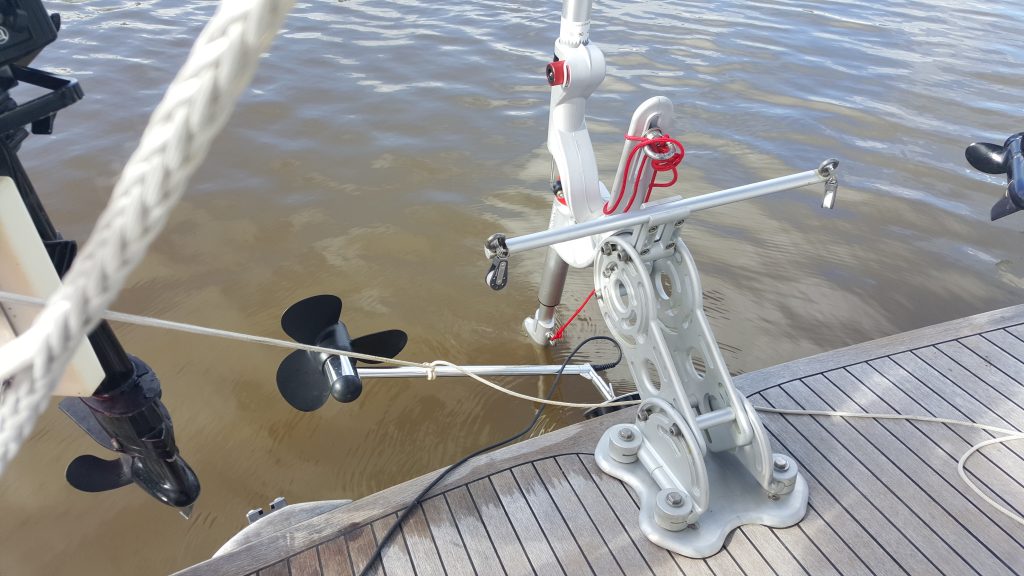
THE PRICE TO BE PAID
We are accustomed, as sailors, to feeling a sharp pain in the wallet whenever we buy something marketed specifically at the marine market. Our chosen sport marks us out in some eyes as people who need to be relieved of some extra cash and nautical prices are adjusted accordingly. Today though customers understand that retail is changing, that everything revolves around value creation and that paying the asking price over the counter is not the only option. And sellers realise too that they can now reach and serve their customers effectively without haemorrhaging so much of the value they have sweated to create in the process. Increasingly what matters is the actual value of the product concerned, not the various add-ons that can be piggy-backed onto the value to produce an often much higher selling price.
I know from my own experience that for a business like mine, nothing beats direct marketing. Costs are lower, first of all, and there is less opportunity for mistakes and misunderstandings. Personal contact with the global sailing community does wonders for my brand too thanks to the free (in the sense that the only outlay involved is that necessary to deliver products and service that keep customers happy) and unstoppable force that is word of mouth marketing. It does take a certain courage to rely on word of mouth though, as the only thing that travels faster and hits harder than positive word of mouth is negative word of mouth. Idealism though is part of my philosophy in life and business and I have found it no impediment at all to finding and consolidating my own specific niche in the market.
A closet idealist uninspired by the thought of chasing every last penny and content instead to service the market in my own particular way, I find myself taking a growing interest in the subject of hydro generators. The hydro generator market offers a wide range of alternatives, almost all of which are offered through indirect sales channels at exorbitant prices despite the fact that generators (that is to say dynamos) are everyday mass-produced items ordinarily inexpensive to obtain.
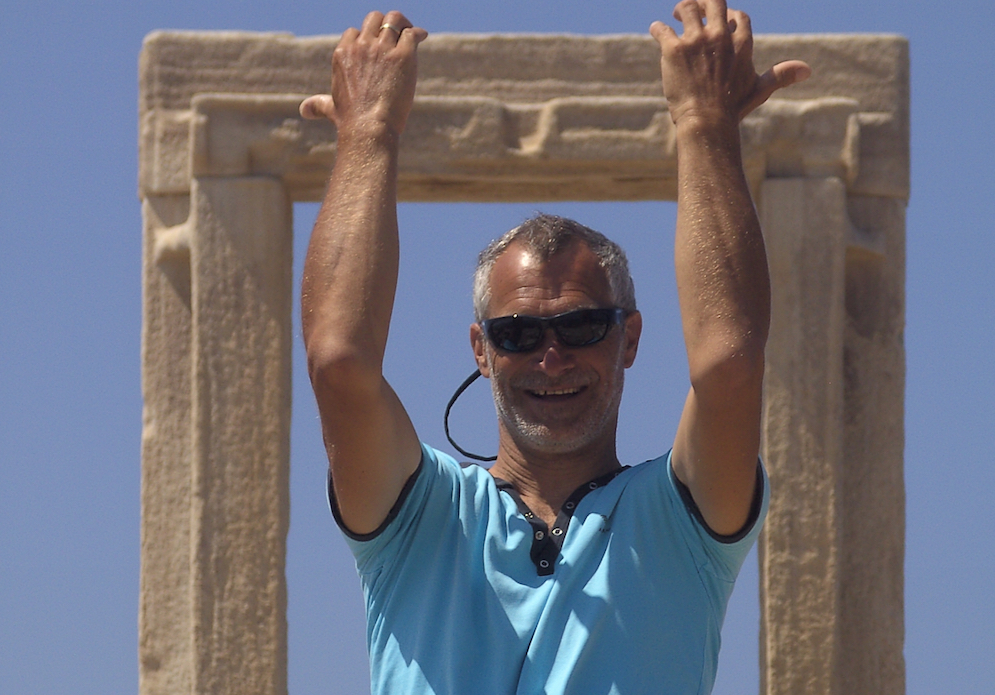
My interest in hydro generators made it inevitable that I would sooner or later stumble across the name of Armin Horn and learn of his baby the SailingGen. The discovery left me energised, my curiosity well and truly sparked. Armin Horn is a professor in the electrical and electronic engineering department at Esslingen University of Applied Sciences and a regular in the Med with his Bavaria, so it comes as no great shock that his accumulated expertise in power generation under sail should have brought forth something special in his basement workshop. SailingGen really appeals to me not just because of its compact design and strong performance, but also because Armin sells it directly at a price that I consider fair/attractive/inexpensive.
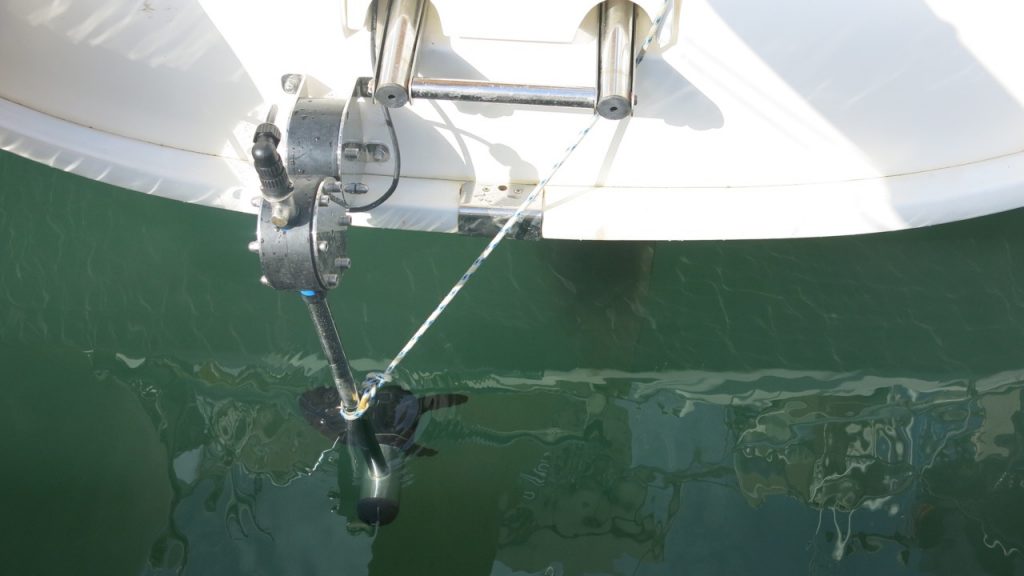
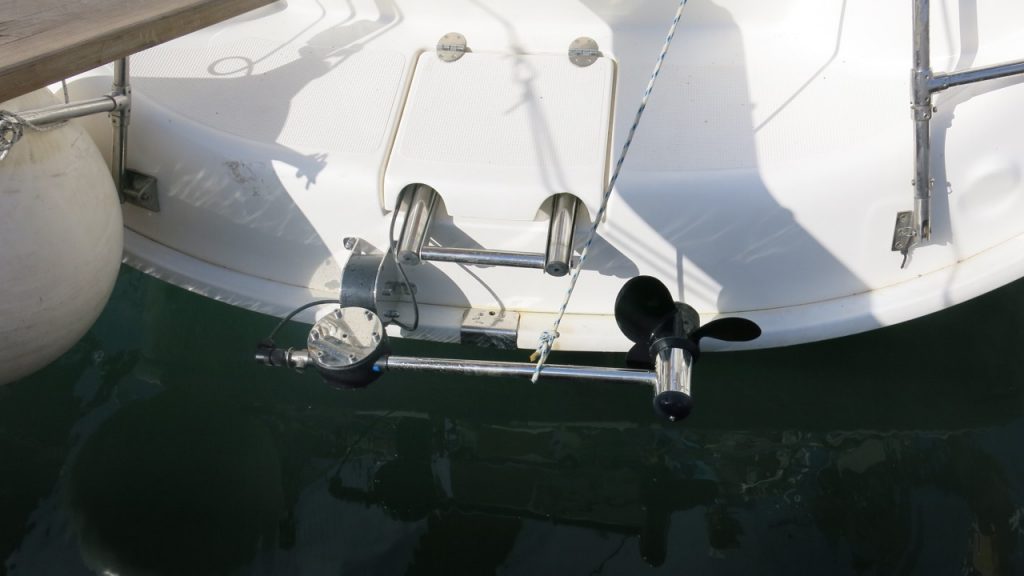
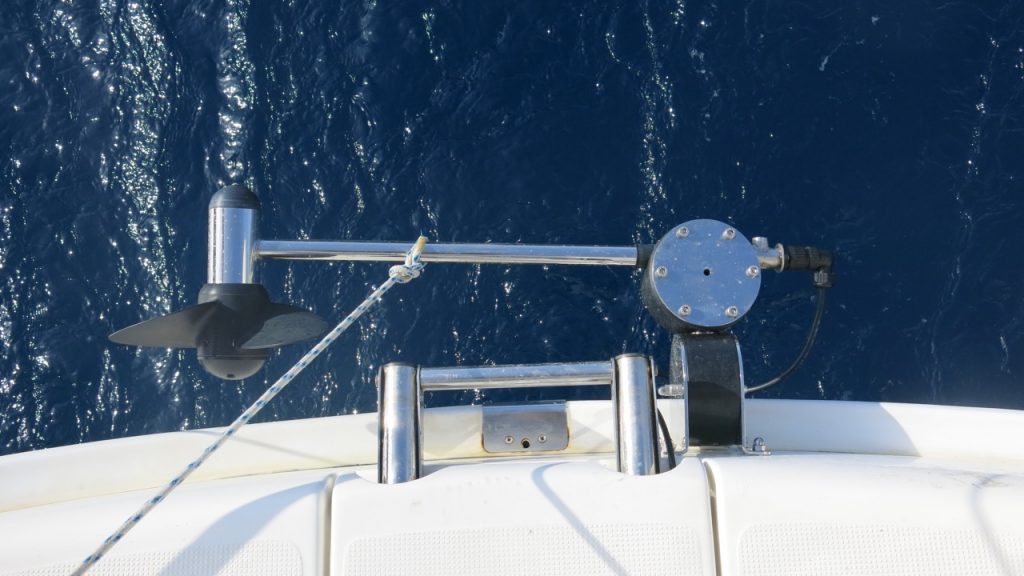
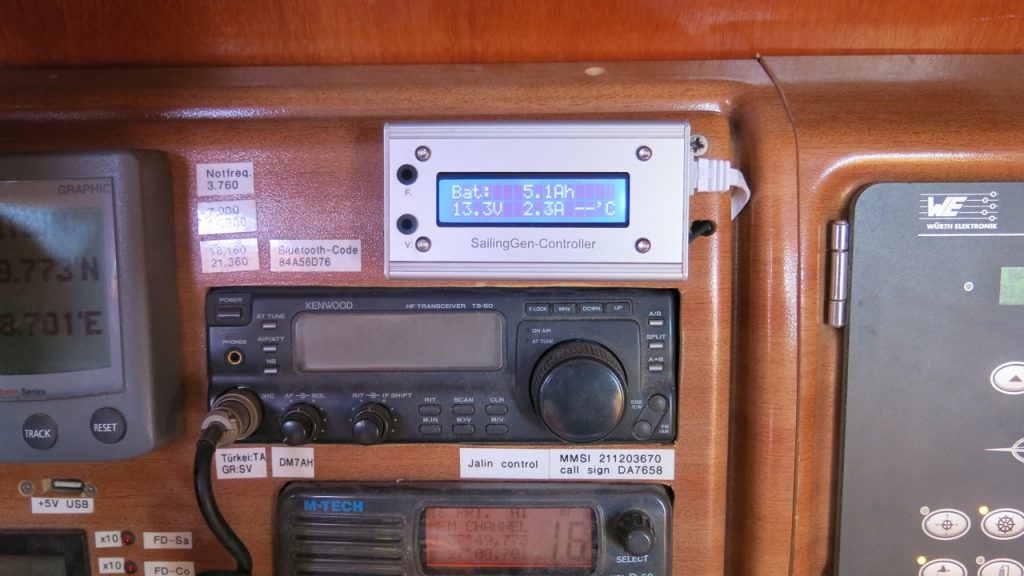
My decision to give Armin a plug in my blog and help put his product on the radar of his target customers in the bluewater sailing community seemed logical and reasonable and more than a few sailors have found themselves asking their Windpilot to share its place of honour in the centre of the transom with Armin’s generator. That there would be consequences was inevitable, but what they would be caught me quite by surprise.
The fact that people now needed to mount a second practical device in what had previously been ‘my’ patch alone set me thinking about how the two could both be accommodated without compromising either. The simplest answer seemed to lie in a couple of modifications and I quickly sketched out my ideas. Designing highly versatile mounting brackets is after all very familiar ground for me after a lifetime focused at the rear end (see above).
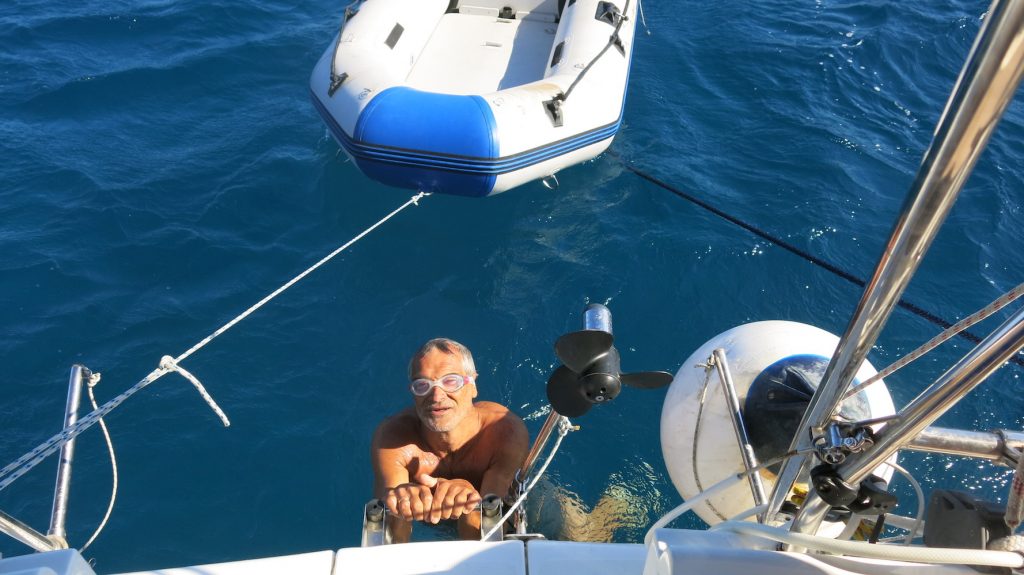
I count happenings like this, where two total strangers happily focus their energies on a particular subject together to good effect without treading on each other’s toes, among life’s highlights. Believe it or not, the whole process of designing Armin’s new versatile mounting bracket involved no more than a few e-mails and hand-scribbled drawings. We are both very pleased with the result and I can only hope that as many sailors as possible take advantage of Armin’s direct marketing proposition and treat themselves to a hydro generator at an unbeatable price.
Apologies for the blatant and unsolicited advertising, but I trust you can understand my support for an individual who not only believes in his innovative product, but also believes it belongs on every transom,
hopes
Peter Foerthmann
Note: Armin Horn and I have yet to meet in person.
































